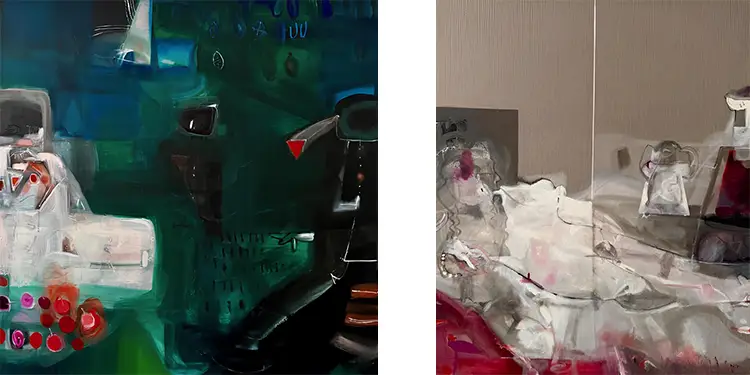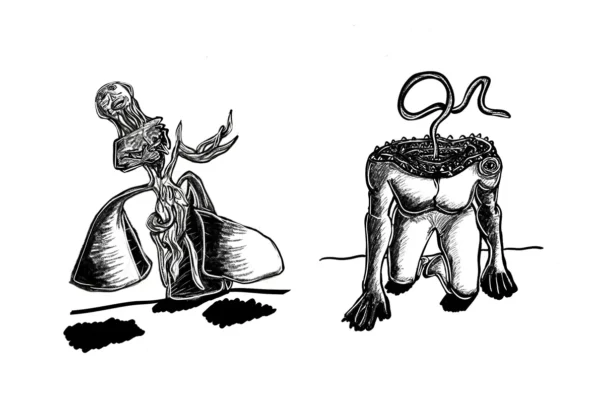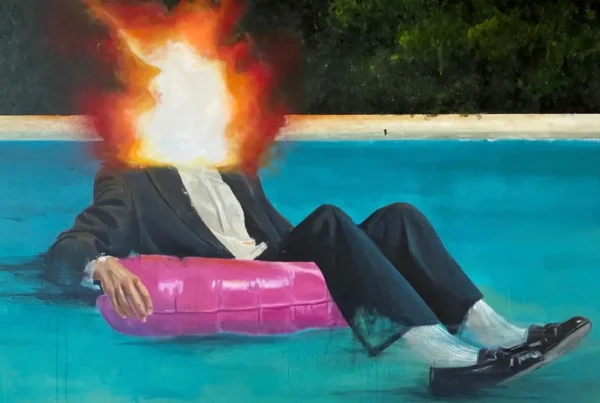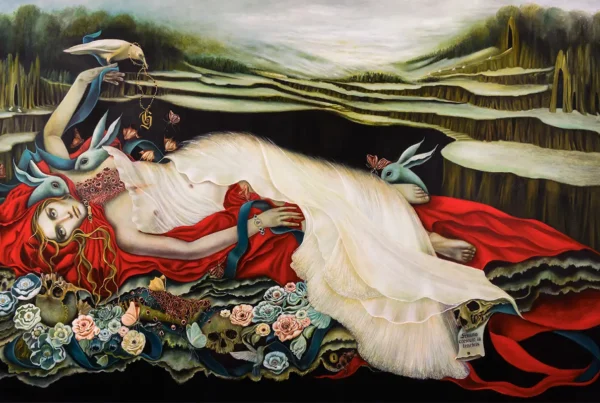“Painting is a continuous dialogue – with myself, with the material, and with the world.”
The Geometry of Feeling
Magdalena Kwapisz-Grabowska has spent over three decades immersed in the visual arts, constantly refining her vision and technique. Her commitment to painting is as enduring as it is restless, marked by continuous experimentation and intellectual curiosity. Educated at the Academy of Fine Arts in Katowice, a branch of the Krakow Academy named after Jan Matejko, she has cultivated a career that spans international borders, with exhibitions in Poland, Germany, the United States, the United Kingdom, and Italy. While her foundations lie in traditional oil painting, her practice resists categorization, weaving conceptual clarity with emotional resonance. Each of her works bears the mark of thoughtful introspection and an unrelenting dialogue between material, memory, and meaning.
Kwapisz-Grabowska’s visual language is grounded in reduction. She transforms complexity into clarity, adhering to the principles of minimalism while avoiding aesthetic sterility. Her guiding principle echoes Ludwig Mies van der Rohe’s famous axiom, “Less is more,” yet she imbues it with personal nuance. Stripping down form to its elemental gestures, she avoids ornament for ornament’s sake, focusing instead on line, texture, and space. Her compositions—often anchored in geometric alignments of vertical and horizontal planes—are not spontaneous outbursts but cultivated expressions of balance. The process is slow, cyclical, and often involves returning to the same canvas over extended periods, allowing time to shape the evolution of a piece.
At the center of her artistic pursuit lies the human figure—fragmented, abstracted, and perpetually in flux. Kwapisz-Grabowska’s fascination with the body transcends anatomy; it is a study of identity, vulnerability, and transformation. Her figures hover between familiarity and abstraction, often lacking defining facial features but rich in emotional suggestion. Hands, torsos, limbs, and hair emerge in varying degrees of articulation, positioned in states that suggest tension, rest, or metamorphosis. These bodily forms are not literal portraits but symbols—echoes of archetypes that speak to broader human experiences. In stripping her subjects of specificity, she invites the viewer to see themselves reflected in ambiguous forms.
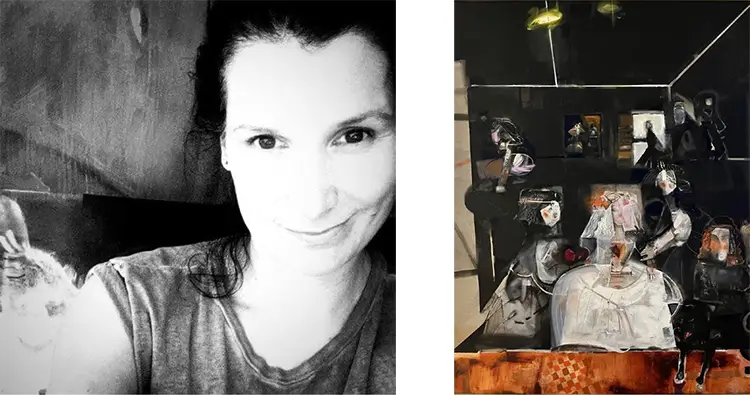
Magdalena Kwapisz-Grabowska: Between the Seen and the Imagined
In Kwapisz-Grabowska’s studio, the act of painting is a ritual of discovery. She does not begin with a complete image in mind but with an openness to what the canvas reveals during the act of creation. Her method blends traditional techniques such as oil glazing with experimental layering, often juxtaposing translucent passages against rough, impasto brushwork. The tactile surface of her paintings plays a significant role in how her compositions communicate: patches of exposed canvas contrast with thick strokes of color, creating a dynamic visual tension. She frequently revisits works months or even years after their inception, believing that a painting continues to evolve so long as it remains in her space.
This slow, recursive process results in works that feel alive—capturing not a single moment but the accumulation of moments. They embody an intuitive rhythm, a sense of emotional logic that exists beneath the surface of composition. Her limited yet expressive palette—ranging from somber grays and blacks to vibrant reds and delicate pinks—intensifies the emotional register of each piece. Color, for her, is not merely an aesthetic tool but a language of its own, one capable of articulating tension, intimacy, and transformation. In this way, her paintings oscillate between serenity and disquiet, always challenging the viewer’s perceptions of beauty and form.
A key element of her oeuvre is deformation—not as an accident, but as a deliberate visual strategy. Through distortion, Kwapisz-Grabowska explores the elasticity of perception, pushing viewers to engage more deeply with what they see. Forms are fractured and reassembled, leading the eye in unexpected directions and prompting questions rather than answers. This visual ambiguity creates a powerful sense of unease that serves a purpose: it forces the spectator to participate in the act of interpretation. Her canvases are visual riddles, each one inviting a closer, more contemplative gaze. In this sense, the deformation is not destructive but generative—it opens space for reflection and meaning.
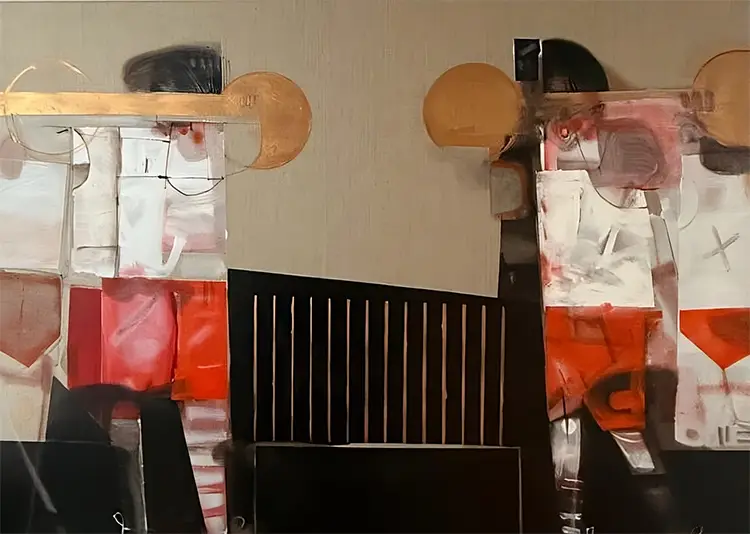
Icons in Motion
The body in motion occupies a central position in several of Kwapisz-Grabowska’s series, most notably GYM and those inspired by opera and ballet. Here, the physical figure becomes more than anatomical subject—it turns into a vessel of symbolism, narrative, and emotion. In GYM, stylized forms are captured mid-stride or suspended in abstracted spaces that resemble otherworldly gymnasiums. These are not representations of athleticism but meditations on potential, discipline, and transcendence. Limbs curve inward and outward in an almost ritualistic dance, invoking ancient ideals of symmetry and balance. The figures evoke not individuals but types—timeless embodiments of human striving.
Her palette in GYM is deliberately restricted to white, black, and red, invoking elemental forces and primal symbolism. These colors are not decorative but conceptual. White suggests transcendence and breath, black anchors the body in material existence, and red signifies vitality, passion, and transformation. This triadic interplay reinforces the metaphysical depth of the series, where the gymnasium becomes a symbolic arena. Rather than a site of mere physical exertion, it becomes a sacred space of inquiry—a metaphorical zone where body and soul are sculpted in tandem. The inspiration traces back to the ancient Greek understanding of the gymnasion as both a training ground and a site of philosophical cultivation.
Parallel to these explorations of motion is Kwapisz-Grabowska’s long-standing engagement with opera and performance, particularly the Deutsche Oper and Staatsballett Berlin. Her paintings translate the auditory drama of Carmen or Madame Butterfly into visual equivalents, capturing the sweeping arcs of emotion in brushstroke and hue. These works capture movement that has already passed, yet still reverberates through her use of color, light, and form. Whether referencing a ballerina mid-pirouette or an operatic soprano in the height of aria, she captures something essential—the ephemeral spark of performance transformed into something enduring. Each canvas becomes an echo, preserving fleeting gestures in pigment and line.
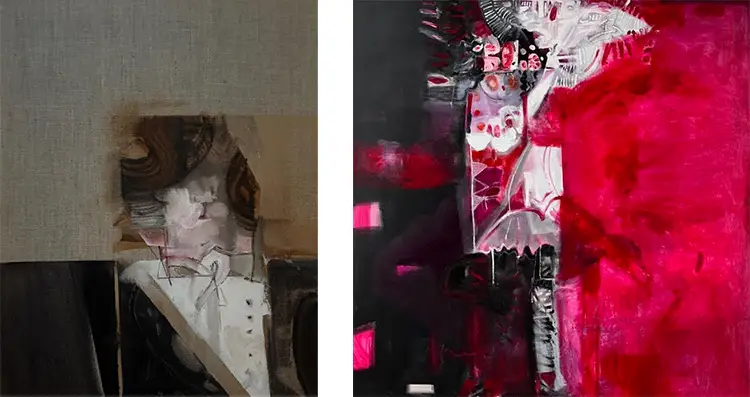
Magdalena Kwapisz-Grabowska: A Woman Rewritten
At the core of Kwapisz-Grabowska’s artistic identity lies an unflinching commitment to reimagining the female form from a woman’s perspective. Rather than adhering to classical traditions that have historically objectified and idealized the nude, she subverts them, offering a vision that is complex, contradictory, and deeply human. Her figures are not muses or symbols of passive beauty; they are vessels of emotion, carriers of stories, and sites of transformation. The female body in her work is not a fixed object but a shifting presence—sometimes fragmented, sometimes whole—always in a state of becoming. This metamorphosis reflects not only physical change but the evolution of identity itself.
Her approach recalls the legacy of Polish New Figuralism, particularly the work of Teresa Pągowska, whose influence is evident in the fusion of abstraction and figuration. Echoes of Tadeusz Kantor’s raw theatricality and Francis Bacon’s visceral distortions further inform her aesthetic. Like Bacon, she often leaves her figures isolated against sparse or unprimed backdrops, enhancing the emotional impact of their contorted forms. But while Bacon’s figures express existential horror, Kwapisz-Grabowska’s bodies speak of resilience, transformation, and inner tension. Her brushwork alternates between aggression and delicacy, a duality that mirrors the themes of contradiction running throughout her oeuvre.
In challenging the male-dominated legacy of nude painting, she engages in a dialogue not only with art history but with broader cultural narratives. Her reinterpretations of icons—Frida Kahlo, Nina Simone, Queen Elizabeth I, and others—are not homages in the traditional sense. They are recontextualizations, infused with contemporary relevance and feminist insight. She draws on diverse cultural sources, from Japanese aesthetics to Panamanian folklore, layering her compositions with symbols that transcend geography. Even figures from mythology and popular culture find a place in her work, reinforcing the idea that identity is multifaceted and fluid. In Kwapisz-Grabowska’s art, the woman is never passive. She is a force, a question, a signifier of continuity and change.
